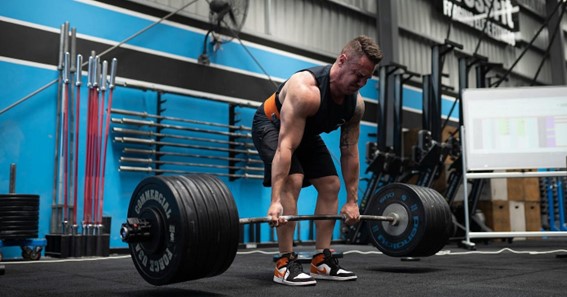Are you curious to know what is RIR in lifting? You have come to the right place as I am going to tell you everything about RIR in lifting in a very simple explanation. Without further discussion let’s begin to know what is RIR in lifting?
What Is RIR In Lifting?
Weightlifting is a dynamic and challenging discipline that requires careful planning and execution to maximize gains and minimize the risk of injury. One crucial factor in weightlifting is understanding and managing training intensity. Reps in Reserve (RIR) is a valuable concept that allows weightlifters to assess their effort levels during sets. In this blog post, we will explore the concept of RIR, its importance in weightlifting, and how it can be used to optimize training for better performance and progress.
What Is RIR (Reps In Reserve)?
Reps in Reserve (RIR) is a measure that indicates how many repetitions an individual could have completed beyond the point of reaching their target rep goal during a set. It quantifies the amount of effort or energy left in the tank at the end of a set. For example, if a lifter performs a set of 10 reps with an RIR of 2, it means they could have performed 2 more reps before reaching failure or muscular fatigue.
The Significance Of RIR In Weightlifting:
- Customized Training Intensity: RIR allows weightlifters to customize their training intensity based on their goals, fitness level, and recovery capacity. By consciously leaving a certain number of reps in reserve, lifters can modulate the difficulty of each set, ensuring appropriate overload without compromising form or risking excessive fatigue.
- Progressive Overload: Progressive overload is a fundamental principle in weightlifting, involving gradually increasing the demands placed on the muscles to stimulate growth and strength gains. RIR provides a quantitative measure of the challenge level in each set, allowing lifters to progressively adjust and increase the workload over time.
- Avoiding Failure And Injury: Training to failure, or complete muscular fatigue, on every set can lead to increased risk of injury and excessive fatigue. By incorporating RIR into training, lifters can stop their sets before reaching failure, reducing the likelihood of compromised form, overexertion, and potential injury.
- Recovery Management: Monitoring RIR helps lifters gauge the overall demand placed on their bodies during training sessions. By managing the number of reps performed and the RIR target, individuals can better regulate training volume and intensity, allowing for adequate recovery between workouts.
Implementing RIR In Weightlifting:
- Understanding Individual Capacity: Different individuals may have different RIR targets based on factors such as training experience, muscle group targeted, and exercise complexity. Experimentation and self-awareness are essential in determining appropriate RIR levels for optimal training effect.
- Progressive RIR Adjustment: As strength and fitness improve, lifters can progressively reduce the RIR target, increasing the challenge and intensity of their workouts. This gradual adjustment ensures continuous progress and adaptation.
- Tracking and Recording: Keeping a training log or using fitness apps can help monitor RIR levels for each set. This allows lifters to track progress, identify patterns, and make informed decisions regarding adjustments in training intensity and volume.
Conclusion:
Reps in Reserve (RIR) is a valuable concept in weightlifting that empowers lifters to optimize their training intensity, tailor workouts to their individual capacity, and promote progressive overload. By understanding and implementing RIR, weightlifters can strike a balance between challenging their muscles and avoiding excessive fatigue or injury. As with any training principle, it is essential to listen to your body, progressively adjust RIR targets, and seek guidance from qualified professionals to ensure safe and effective implementation. Embrace the power of RIR and elevate your weightlifting journey to new heights of strength, performance, and results.
Assemble more facts about different topics on Feedatlas
FAQ
What Does 1 RIR Mean In Weightlifting?
Repetitions In Reserve (RIR) RIR is a tool used to describe how challenging an exercise set was by estimating how many reps you believe were left before reaching absolute fatigue. E.g. 10 BB back squats – RIR 2 would represent a weight you can only do 2 more reps with. RIR 0 – maximal effort. RIR 1 – 1 repetition left.
What Does 3 RIR Mean In Weightlifting?
RIR means “Reps in Reserve” = how many more reps could you do before failure (technical failure OR actually missing a lift). For our purposes, we use RIR in reference to technical failure. 3+ RIR (or RPE < 7) = More than 3 Reps In Reserve = more than 3 repetitions away from (technical) failure.
What Is The Best RIR For Muscle Growth?
0-3 RIR
The current consensus is that training within a 7-10 RPE, with 0-3 RIR is the “sweet spot” for maximally stimulating muscle growth.
What Is The Difference Between Rep And RIR?
The only difference between RPE and RIR is that RIR is used for rep-based exercises, whereas RPE can be used for other types of training as well, such as HIIT, timed exercises, etc. THe powerlifting benefits of each, though, are about the same.
How do you use RIR in training
What is RIR in strength training?
